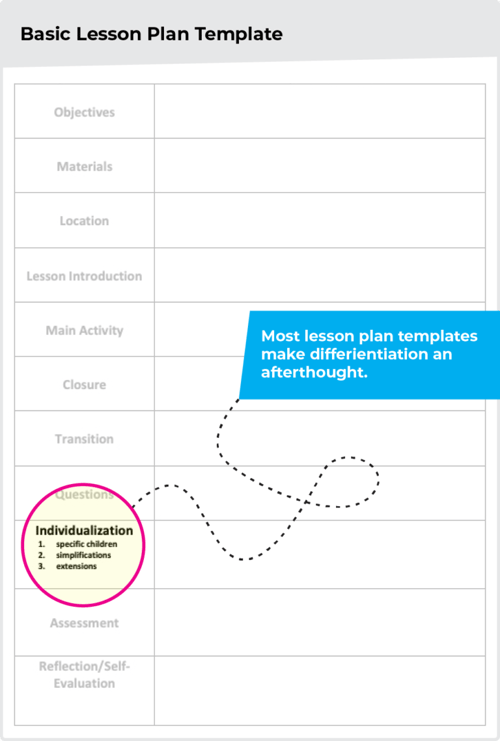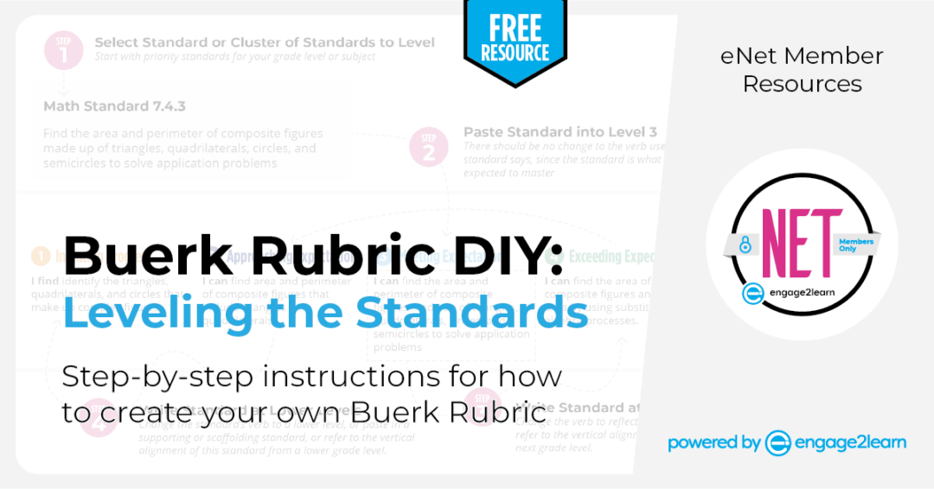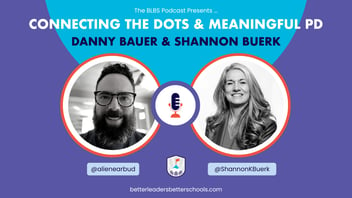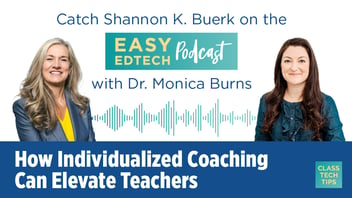How to Proactively Plan for True Differentiation
Differentiation is a practice many educators have been trying to master for years. Every educator understands it in theory: the use of a “wide variety of teaching techniques and lesson adaptations that educators use to instruct a diverse group of students, with diverse learning needs, in the same course, classroom, or learning environment.” (Differentiation, 2013) But, when it comes to its practical application, the struggle to successfully implement differentiation persists.
Upon careful evaluation of the reasons why that is the case, one would not identify teachers’ lack of will to meet all of their learners’ needs as a reason, as we understand that if teachers had the skills to do it effectively, they would. Similarly, the issue cannot be laid at the feet of administrators, who try mightily to set expectations and provide support for their teachers to ensure the success of all of their learners. So, why is differentiation something with which we continue to grapple?
The Real Reason Teachers Struggle to Differentiate
When most educators think about the term “differentiation,” two dreaded ‘R’ words tend to stigmatize it. By and large, they think about how they are going to “remediate” learning “reactively.” That is, they tend to plan instruction and activities to address learning gaps of struggling learners after initial (or Tier I) instruction is completed. The result is an inefficient use of time during initial instruction with respect to meeting all learners’ needs, as struggling learners muddle through the learning, and advanced learners remain bored with instruction that does not challenge them nor appeals to their curiosities and interests. The main culprit for this inability to successfully and proactively differentiate is the lesson plan template that teachers use.

Most lesson plan templates are formatted as one column with multiple fields that allows teachers to plan lessons for one day. If there are multiple columns on the template, it is usually to plan lessons for an entire week. Toward the bottom of the column is the field in which they plan for how they will “differentiate” the learning. This gives teachers the impression that it is to be done after initial instruction, which manifests itself in the classroom. What’s worse is that for far too many teachers, differentiation is merely an afterthought.
Often, the only way struggling learners’ needs are met is during intervention periods throughout the school day, which many schools do not have, or during after-school tutorials, which learners attend intermittently, if at all. Efforts to improve this recurring situation require a paradigm shift, not just in teachers’ mindsets of how to adequately address all learners’ needs, but in lesson design, which will help to facilitate that shift.
The Rubric Designed for Proactive Differentiation
Enter the Buerk Rubric: a formative tracker for growth towards mastery of standards that can be used to create student ownership of learning. The Buerk Rubric provides a standards-aligned, personalized path to learning on a growth continuum by describing the behavior for each level with the specificity to enable the teacher and learner to get the clearest picture possible of the current reality and the next step for growth. Simply put, it helps teachers AND learners identify where learners enter the learning during initial instruction and establishes the pathway for them to attain mastery.
Using the Buerk Rubric, teachers are able to design learning in this manner because the template is structured to allow them to align learning resources, activities, and assessments to scaffolded standards. These standards not only help struggling learners progress to mastering the grade-level standards to the appropriate depth and complexity, but also create learning opportunities to allow advanced learners to engage in higher-order levels of thinking that can activate their curiosities and meet their interests. This ensures each lesson or learning activity is planned and executed for Tier 1.
However, the benefits of the Buerk Rubric don’t stop there. When teachers plan lessons to allow learners to work autonomously, they struggle to create a platform that houses their learning resources, activities, and assessments that learners can access at their own paces. The Buerk Rubric alleviates that issue, as it becomes a learner-facing document that not only facilitates their ability to access what they need to acquire knowledge and demonstrate mastery, either in-person or remotely, but also their ability to set learning goals toward mastering grade-level and higher-order thinking standards.
If you are ready to get started building your own Buerk Rubric, we’ve created a Buerk Rubric DIY resource that is FREE to download at the link/image below.

The Solution You Didn’t Know You Needed
As a former campus principal, I observed my teachers use the Buerk Rubric to transform their classrooms into learning environments in which they provided the requisite support to struggling learners (i.e. small-group instruction) while simultaneously allowing on-level and advanced learners to work more autonomously on more challenging learning objectives that they had the resources and ‘Do-It-Yourself’ activities necessary to master. Gone were the days that teachers “taught to the middle” during initial instruction and lost some learners while boring others. The Buerk Rubric unlocked their ability to design those transformative learning opportunities and bring them to fruition in their classrooms for all learners to be actively engaged and successful.
For years, we’ve wondered how we can differentiate effectively to meet the needs of all learners. Finally, we have the tool – THE SOLUTION – that will ensure that we can do just that: the Buerk Rubric!
Tens of thousands of teachers have transformed their classroom using the Buerk Rubric, and e2L continues to support teachers through coaching and the design of digital products that make implementing the Buerk Rubric easy. In fact, eSuite includes thousands of pre-built Buerk Rubric lesson plans with pre-leveled/scaffolded standards and resources, making it easy for teachers to design their own differentiated lesson plans in a fraction of time and for students to have a individualized path to mastery. Contact me for more information on how the Buerk Rubric can significantly impact instruction and learning in your organization, or Start Partnership today!



